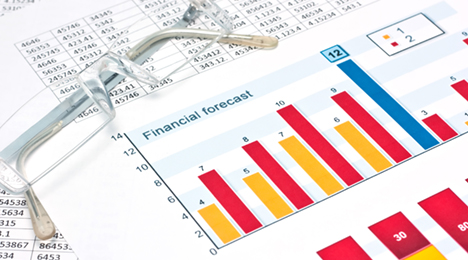As delinquency ticks up, market still seen as ‘extremely favorable’

Both S&P Global Ratings and the American Bankers Association spotted rises in auto finance delinquencies in their recent reports, but Cox Automotive chief economist Tom Webb insisted this week that the “overall financing environment remains extremely favorable.”
According to results from the ABA’s second-quarter Consumer Credit Delinquency Bulletin, both of its categories of auto financing registered slight year-over-year upticks. ABA reported direct auto loan delinquencies — contracts arranged directly through a bank — edged 1 basis point higher in Q2 from 0.81 percent to 0.82 percent.
Meanwhile, ABA noted Q2 indirect auto loan delinquencies — financing arranged through a third party such as a dealer — moved up from 1.45 percent to 1.56 percent.
And S&P Global Ratings carved out its look strictly at subprime paper and noticed the 60-plus-day delinquency rate ticked up to 4.85 percent in August 2016 from 4.74 percent in July and 4.14 percent in August of last year. Analysts acknowledged subprime delinquencies remain below the highest level, which was recorded in August 2009 at 5.19 percent.
Webb also considered where wholesale prices currently stand when evaluating how delinquencies might be impacting auto financing activity.
“There have been some lenders who have pulled back as a necessity because they became overly aggressive and they started to see it in their portfolio performance. However, there have been other players who have come in,” Webb said during his quarterly conference call. “From the dealer standpoint, the availability of financing is not an issue at all.
“From the lender standpoint, although delinquencies are ticking up a little bit, they’re not overly alarming,” he continued. “There have been some significant increases for some lenders in terms of their severity of loss. But I would suggest that would not be because of used-vehicle values but because of their loan-to-value ratio going in.”
Looking back at the ABA bulletin, the composite ratio — which tracks delinquencies in eight closed-end installment loan categories — fell 3 basis points to 1.35 percent of all accounts — a record low. This reading also marked the third year that delinquency rates were below the 15-year average of 2.21 percent.
The ABA report defines a delinquency as a late payment that is 30 days or more overdue.
“Consumers have become more confident over the past two years and for good reason — their financial picture is improving and their paychecks have finally started to rise as we near full-employment levels,” ABA chief economist James Chessen said. “Quarter after quarter, consumers continue to build a stronger balance sheet as they earn more, save more and keep debt levels low relative to income.”
So if Chessen is correct, auto finance companies might be leveraging a strategy Webb described. After all, Equifax recently reported that newly opened auto loans and installment contracts year-to-date through June and reported to Equifax as of August represented a rise of 3.5 percent versus the same period a year ago.
“Going forward, you assume that wholesale values are going to deteriorate a least a little bit. To use the same loan-to-value ratio, you’re putting more risk on your books because your loan-to-value ratio is based on current values whereas your repo might occur 16 to 18 months later,” Webb said.
“I think they have to incorporate that and I wouldn’t be surprised if everyone tries to get a little more up-front money in the deal. I think it would be better for everyone,” he went on to say.

 View The Latest Edition
View The Latest Edition

